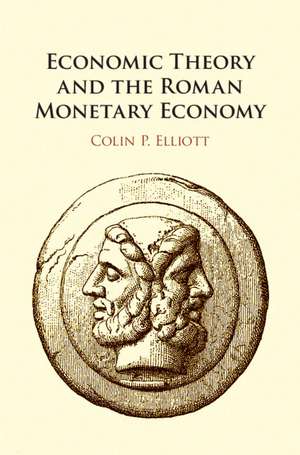Economic Theory and the Roman Monetary Economy
Autor Colin P. Elliotten Limba Engleză Hardback – 19 feb 2020
Preț: 689.93 lei
Preț vechi: 775.20 lei
-11% Nou
Puncte Express: 1035
Preț estimativ în valută:
132.03€ • 137.01$ • 110.36£
132.03€ • 137.01$ • 110.36£
Carte disponibilă
Livrare economică 24 februarie-10 martie
Preluare comenzi: 021 569.72.76
Specificații
ISBN-13: 9781108418607
ISBN-10: 1108418600
Pagini: 222
Ilustrații: 6 b/w illus.
Dimensiuni: 156 x 234 x 16 mm
Greutate: 0.41 kg
Editura: Cambridge University Press
Colecția Cambridge University Press
Locul publicării:Cambridge, United Kingdom
ISBN-10: 1108418600
Pagini: 222
Ilustrații: 6 b/w illus.
Dimensiuni: 156 x 234 x 16 mm
Greutate: 0.41 kg
Editura: Cambridge University Press
Colecția Cambridge University Press
Locul publicării:Cambridge, United Kingdom
Cuprins
1. On writing Roman economic history; 2. Embedding contexts of Roman money; 3. Evidence and theory; 4. Rationality, purposefulness and action; 5. The meanings of money quantity and quality; 6. Understanding money use and value.
Notă biografică
Descriere
Reconceptualizes economic theory as a tool for understanding the Roman monetary system and its social and cultural contexts.
